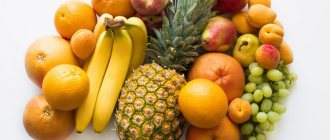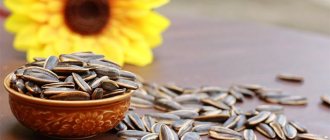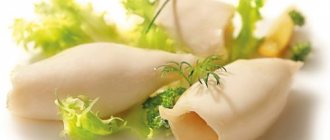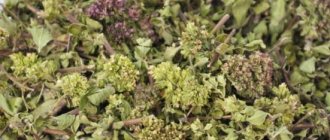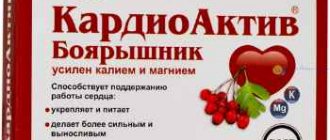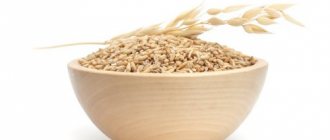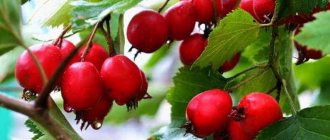Is it possible to brew hawthorn?
When exposed to high temperatures, hawthorn does not lose its beneficial properties. Therefore, it is often used to make tea or infusion. The wide distribution of shrub fruits in alternative medicine is due to their rich composition. They contain large amounts of:
- vitamins;
- flavonoids;
- organic acids;
- tannins;
- fatty oils;
- minerals.
You can brew both hawthorn fruits and the leaf part. To get the maximum benefit from the decoction, you need to brew it correctly and prepare the raw materials.
It is important to pay special attention to picking and drying berries. Hawthorn is harvested from late September to early November. Experts recommend collecting immediately after the first frost. It is then that the concentration of nutrients in the berries increases. The collected fruits are dried in the oven at a temperature of 50-60°C. The berries are first laid out on a baking sheet in a thin layer. They are stirred periodically with a special spatula. Finished raw materials are stored in canvas bags or glass jars.
Attention! Hawthorn decoction should be brewed and consumed in accordance with the required dosage, having previously excluded the possibility of contraindications.
What diseases does hawthorn treat?
Healing products made from hawthorn help treat many diseases.
For these diseases, healing solutions are beneficial:
- angina pectoris;
- gastritis;
- tachycardia;
- atherosclerosis;
- thrombophlebitis;
- phlebeurysm;
- hypertension;
- vegetative-vascular dystonia;
- rheumatism;
- thyroid diseases;
- diabetes;
- colds;
- dizziness.
Attention! Hawthorn decoctions are not always beneficial, even if there are no contraindications to them. Exceeding the dosage or frequency of use causes negative effects. Rare pulse, low blood pressure, weakness and drowsiness - these are the consequences of an overdose.
Benefits of hawthorn decoction and contraindications
Hawthorn is a shrub belonging to the Rosaceae family. It grows in temperate and subtropical climates. The plant is divided into 1250 species, 40 of which are found in the CIS countries. The height of the bush varies from 5 to 12 m. Blood-red hawthorn has become especially widespread in official and alternative medicine.
Due to its properties, hawthorn decoction is widely used in folk medicine. The necessary therapeutic effect is achieved due to the content of microelements, vitamins, natural acids and flavonoids. Such a rich composition provides the following effects on the human body:
- improvement of oxygen metabolism;
- normalization of the nervous system;
- regulation of blood sugar levels;
- restoration of blood pressure;
- reducing the amount of bad cholesterol;
- improving the elasticity of vascular walls;
- stimulation of collagen synthesis;
- removal of toxins and heavy metal salts from the body;
- normalization of sleep;
- strengthening the immune system;
- relief from headaches.
Hawthorn decoction is considered an effective folk remedy that normalizes blood pressure levels. It also has a strengthening effect on the walls of blood vessels and prevents the formation of atherosclerotic plaques, which improves the permeability of the vascular cavity. In stressful situations, the decoction normalizes sleep and eliminates increased anxiety.
Many people try to brew hawthorn decoction during the period when influenza viruses are active. The substances present in the drink have a stimulating effect on human immunity. The effect and taste of the decoction are improved with honey. It is necessary to add it after the decoction has cooled so that honey does not lose its healing properties. Before brewing medicinal berries, you should consult your doctor. The remedy has a lot of contraindications, which include the following:
- low blood pressure;
- breastfeeding period;
- age up to 12 years;
- diseases of the digestive system in the acute stage;
- pregnancy.
The name of the plant comes from the Greek “strong”, which reflects either the property of the wood - strong and hard, or the ability of the plant to live long: the age of hawthorn can reach 300 years.
Hawthorns are tall shrubs, less often - trees up to 5-8 meters high with strong shoots, planted with thick, sparse thorns of stem origin. The flowers are white, fragrant, collected in corymbose inflorescences. The leaves and fruits vary from species to species. True to its name, the fruits of hawthorn are blood-red with 3–4 seeds. The leaves are dark green above, lighter below. It blooms in May–June, the fruits ripen in August–September. The plant bears fruit from the age of 10–15 years and can live up to 200–300 years.
The healing properties of hawthorn have been known since ancient times. For example, in surviving ancient manuscripts one can find references to the fact that hawthorn was widely popular and was used in the treatment of a number of ailments, especially in cases of cardiac dysfunction. In the East, hawthorn was called “wild apple tree”: the hawthorn tree really looks like an apple tree, especially with its leaves and roots. This was noted by Avicenna, who wrote that hawthorn “knits stronger than rowan, suppresses bile and blocks the flow more strongly than any other fruit.” Avicenna believed that hawthorn was harmful to the stomach, it “locks the stomach and does not retain urine.” The German doctor Jening noted back in 1896 that hawthorn has a positive effect on heart diseases, increases heart contractions and has a calming effect on the central nervous system (CNS). Some doctors achieved complete cessation of attacks of pain due to angina pectoris by giving patients hawthorn preparations. During the Great Patriotic War, hawthorn fruits were used as a substitute for heart medications that were in short supply at that time.
Many peoples call hawthorn a thorn: among the Germans it is a white thorn, among the British it is simply a thorn. Indeed, the thorn is the most noticeable part of the plant. By origin, hawthorn thorns are former twigs. If you look closely, you can see that at the very beginning of development, the soft and green spines have small leaves that quickly fall off. The grown thorns become incredibly strong, sometimes they are even used instead of nails. A large thorn pierces the foot through almost any sole, so you need to walk very carefully near hawthorns. The length of the spines is a species characteristic.
The blood-red hawthorn has a European-Siberian type of habitat, the length of which from west to east exceeds 5 thousand km. It grows in forest, forest-steppe and steppe zones in sparse dry forests, on forest edges and clearings, along river floodplains.
Hawthorn flowers and fruits are harvested as medicinal plant raw materials. The flowers are collected at the beginning of flowering, when some of them have not yet opened, by cutting off the thyroid inflorescences and individual flowers. Dry in dryers at a temperature of 40 ° C in attics, under canopies or in rooms with good ventilation. Hawthorn fruits are harvested during the ripening period from the end of September until frost, tearing off entire scutes with fruits or individual fruits. Dry in dryers at a temperature of 70 ° C. The shelf life of fruits and flowers is 2 years.
The State Pharmacopoeia of the XI edition includes 12 species of hawthorn permitted for procurement as medicinal raw materials. Hawthorn fruits and flowers are included in the State Pharmacopoeia as medicinal raw materials (two separate articles).
Unlike other medicinal plants, almost all parts of hawthorn, with the exception of the roots, contain a lot of useful substances. However, only fruits and flowers are used in medicine.
The flowers contain flavone glycosides hyperoside and quercitrin, which have the aglycone quercetin, but contain different sugars: hyperoside is quercetin-3-galactoside, quercitrin is quercetin-3-rhamnoside. Other phenolic compounds in hawthorn flowers include caffeic and chlorogenic acids. Acetylcholine, choline and trimethylamine were also found. The smell is caused by essential oil and some volatile compounds.
Hawthorn fruits contain hyperoside. Caffeic and chlorogenic acids, tannins (which are dimers of L-epicatechin and leucoanthocyanidin), triterpene compounds (ursolic and oleanolic acids), essential oil, β-sitosterol (the latter two substances in the seeds), sorbitol, choline and acetylcholine. Fresh ripe fruits are soft, mealy and tasty; their medicinal value is not much inferior to rose hips; they contain from 4 to 11% sugar, mainly fructose, so they can be eaten even if you have diabetes. Quite a lot of pectin, which not only forms jelly during processing, but also removes heavy metal salts and other harmful substances from the body.
Hawthorn is used as a cardiotonic and blood circulation regulating agent for palpitations, insomnia, and high blood pressure.
As a result of the use of hawthorn preparations in patients, their general well-being improves, blood pressure decreases, headaches, dizziness, noise in the head or ears decrease or disappear, the cholesterol content decreases (effective in the event of atherosclerotic plaques) in the blood and the concentration of lecithin increases, there is a tendency to normalization of blood clotting parameters. Hawthorn preparations are successfully used for symptoms of circulatory failure in elderly and senile people; they have a particularly beneficial effect on the blood supply to the brain; used for diseases of the menopausal period (both in women and men), thyrotoxicosis, atherosclerosis, angiotrophoneurosis, arterial hypertension, angina pectoris, atrial fibrillation and paroxysmal tachycardia, extrasystaly, insomnia, pneumonia, influenza-like diseases. Hawthorn has a slight sedative effect, regulating the functioning of the central nervous system, improves blood flow in the coronary vessels, and reduces body tension. Hawthorn helps improve memory and concentration. It is beneficial for patients with diabetes. The best effect is achieved with regular long-term use of hawthorn.
Hawthorn fruits are used for tachycardia, arterial hypertension, chronic heart failure (grades I–IIa), atherosclerosis, cardialgia, atrial fibrillation, paroxysmal supraventricular tachycardia, extrasystole, digitalis intoxication; insomnia, thyrotoxicosis, menopausal and asthenoneurotic syndrome. Fruits are contraindicated in case of hypersensitivity, in childhood (up to 12 years) and during pregnancy (first trimester). Use internally in the form of tincture and extract, 20–30 drops 3–4 times a day. In the form of an infusion - 15-30 ml 2-3 times a day. Side effects may include allergic reactions (urticaria, itching), bradycardia (with prolonged use); when used in large doses – decreased blood pressure, drowsiness. When administered together with cardiac glycosides, the cardiotonic effect is enhanced; with β-blockers – hypotensive effect.
Hawthorn tincture is used as part of complex therapy for functional disorders of the heart, cardialgia, menopausal syndrome, and asthenoneurotic conditions. Prescribed orally: for adults – 20–30 drops 3–4 times a day before meals (course of treatment is 20–30 days); children over 12 years old - 10-15 drops, diluted in 1/4 glass of water 3-4 times a day before meals (course of treatment is 20-30 days). The tincture should be used with caution in case of liver diseases, alcoholism, traumatic brain injury, and brain diseases. The absolute alcohol content in the maximum single dose of the drug for adults is 0.45 g, for children – 0.23 g; in the maximum daily dose of the drug for adults - 1.8 g, for children - 0.9 g. During the treatment period, care must be taken when driving vehicles and engaging in other potentially hazardous activities that require increased concentration and speed of psychomotor reactions.
Hawthorn flowers have antiarrhythmic and hypotensive effects, improve coronary and cerebral circulation, and reduce heart rate. Reduce the excitability of the central nervous system, reduce cholesterol in the blood and increase the amount of lecithin; normalize blood clotting indicators. With hypogalactia, lactation is increased and dyspeptic symptoms in infants are eliminated. The hypotensive effect is more pronounced than that of hawthorn fruits. Use internally as an infusion of 15–30 ml 2–3 times a day. To prepare the infusion, 5 g (1 tablespoon) of raw material is placed in a glass or enamel container, poured with 200 ml of water, covered with a lid and heated in a boiling water bath for 15 minutes. Cool at room temperature for 45 minutes, filter, and squeeze out the remaining raw materials. The volume of the resulting infusion is adjusted to 200 ml with boiled water. Allergic reactions are possible as side effects; bradycardia (with prolonged use); nausea, vomiting, intestinal colic (when taken on an empty stomach).
The liquid extract of the fruit is part of the complex preparation Cardiovalen (adoniside + hawthorn fruit extract + valerian officinalis rhizomes with roots tincture + gray jaundice juice + camphor + sodium bromide). It has a cardiotonic and sedative effect and is indicated for the initial stage of chronic heart failure and cardiopathy. Apply 15–20 drops orally 1–2 times a day.
For insomnia and heart neuroses, a mixture of hawthorn and valerian preparations works well.
It must be remembered that prolonged and uncontrolled use of hawthorn preparations can cause depression of heart rate.
The fruits of large-fruited hawthorn species are quite tasty; they can be eaten fresh, processed into jam, wine, compote, and brewed as tea. However, hawthorn should not be overused. It is not recommended to eat more than a glass of berries at one time, as this can cause a sharp drop in blood pressure and heart rhythm disturbances. One rosette of hawthorn jam replaces a double dose of such a strong heart remedy as adonizide. Hard hawthorn wood is used to make wooden products. The bark is used to dye fabrics red. The fruits are used to make jam, jelly, substitute coffee and tea. Dried berry flour is added to dough to create bread with a fruity flavor.
Information about the authors: Samylina Irina Aleksandrovna - Doctor of Pharmaceutical Sciences, Professor, Corresponding Member of the Russian Academy of Medical Sciences, Director of the Research Institute of Pharmacy; Head of the Department of Pharmacognosy MMA named after. THEM. Sechenov. Tel.; Sorokina Alla Anatolyevna - Doctor of Pharmaceutical Sciences, Professor of the Department of Pharmacognosy of the MMA named after. THEM. Sechenov. Tel.; Pyatigorskaya Natalya Valerievna - candidate of pharmaceutical sciences, associate professor, deputy director of the Research Institute of Pharmacy for scientific work. Tel.
How to brew hawthorn correctly to preserve vitamins
To prevent hawthorn from losing its beneficial properties, it should be brewed in accordance with certain rules. Before drying, the fruits and leaves of the bush are sorted to eliminate spoiled raw materials. It is also not recommended to dry unripe berries. The collected raw materials are laid out on paper and put in a well-ventilated place, excluding the possibility of direct sunlight. You can also dry hawthorn leaves and berries in the oven.
To properly brew hawthorn leaves, you should first select a container. For brewing, a thermos or a regular kettle is most often used. You can brew a medicinal drink in the following ways:
- with green or black tea;
- without additives;
- in combination with herbs or berries.
The standard process of brewing a medicinal product is performed according to the following scheme:
- Pour boiling water over the container and pour the necessary components into it.
- The contents are poured with boiling water.
- The drink is allowed to “breathe” for 5 minutes, and then the container is closed with a lid.
- The infusion time is 1 hour.
- The drink is filtered before use.
How to brew fresh hawthorn
Healing tea can be brewed from dried, frozen or fresh hawthorn fruits. It is believed that berries that are not subjected to heat treatment contain more useful substances. To brew a vitamin drink, you will need the following ratio of components:
- 1 tbsp. l. fresh berries;
- 250 ml boiling water.
Cooking process:
- Mash the berries with a masher until smooth.
- It is added to water and placed on low heat.
- It is necessary to cook the berry mixture until its volume is reduced by half.
- Before use, the resulting drink is filtered.
How to brew frozen hawthorn
They try to freeze hawthorn for use in winter, when the body most urgently needs vitamins. When frozen, some of the beneficial components are lost, but this reduces the benefits of the berries slightly. It is not advisable to brew the decoction in a plastic container. Porcelain and glassware are much more suitable. It is recommended to scald the container with boiling water before use.
Components:
- 2 tbsp. l. frozen berries;
- 260 ml water.
Cooking process:
- The berries are defrosted naturally in a separate container.
- They are carefully placed in a teapot and filled with water.
- After 15-20 minutes the drink is ready for use.
How to brew dried hawthorn
Hawthorn can be brewed not only in a teapot, but also in a thermos. Especially when it comes to dried fruits. When infused for a long time under the influence of heat, the berries quickly release beneficial substances into the drink. The finished product is often used to strengthen the immune system and eliminate painful sensations of various origins. Hawthorn infusion in a thermos is prepared using the following components:
- 30 g dried berries;
- 450 ml hot water.
Recipe:
- The berries are thoroughly washed to remove excess dust and dirt.
- The raw materials are poured with hot water, after which the thermos is carefully sealed.
- After 2 hours, the drink is filtered and taken 30-40 minutes before meals.
Important! The maximum daily dosage of the decoction is 150 ml. It is recommended to drink no more than 600 ml of the remedy per day.
Features of using hawthorn for diseases
Hawthorn has a complex positive effect on the entire cardiovascular and nervous system of a person, but this effect is especially noticeable in the following diseases:
1️⃣ Arrhythmia
With this disease, the normal heart rhythm is disrupted. And since hawthorn improves the conduction of impulses through the heart muscle, it will help normalize the rhythm of contraction of the heart chambers and also alleviate atrial fibrillation.
2️⃣ Tachycardia
With this disease, the heart rate increases to 100 beats per minute or higher, which in most cases indicates a lack of oxygen in the blood. By “accelerating” the blood and the amount of oxygen consumed (which is why shortness of breath occurs), the body tries to compensate for the deficiency. And, in fact, it is necessary to normalize the balance of hemoglobin, which transports oxygen. Hawthorn contains iron and flavonoids - these are precisely what are needed for the production of hemoglobin molecules.
3️⃣ Extrasystole
Violation of the rhythm of heart contraction. This is when the chambers of the heart muscle contract at the wrong period, causing the nominal blood flow to be disrupted. Most often, ventricular extrasystole is a consequence of impaired conduction of impulses from the sinus node. Hawthorn normalizes sensitivity to such impulses.
4️⃣ Vascular atherosclerosis
It develops against the background of the accumulation of low-density cholesterol (it is often called “harmful”), which leads to blockage of blood vessels and the formation of cholesterol plaques. Hawthorn helps lower cholesterol levels by stimulating its breakdown in the liver.
5️⃣ Heart failure
With this disease, the functionality of the myocardial wall is impaired with the accumulation of intercellular fluid. By normalizing blood pressure, the negative effect of the disease is minimized (but, unfortunately, not completely eliminated).
6️⃣ Prevention of heart attack
There are many reasons for the occurrence of this disease, but the most common provoking factor is high blood pressure combined with the active formation of cholesterol plaques. Hawthorn helps cleanse blood vessels, thereby reducing the likelihood of a heart attack. But is it possible to take hawthorn after a heart attack? This depends on many factors, so it is best to discuss this issue with your doctor.
7️⃣ Angina pectoris
One of the most common diseases among people of retirement age. Indicates a lack of blood in one or more chambers of the heart, which most often develops against the background of extrasystole (impaired conduction of impulses by the heart muscle). Carotene, iron, vitamin E help neutralize this negative effect, and they are found in large quantities in hawthorn.
Is it possible to brew rosehip and hawthorn together?
The value of the vitamin drink is increased by adding rose hips to the hawthorn. Both components have a general strengthening effect on the body. It is recommended to drink the drink at an increased risk of contracting colds and viral diseases. It is also permissible to brew and use it as part of complex therapy for various ailments. To preserve maximum benefits, it is necessary to brew rosehip and hawthorn correctly. Often additional components are added to the main components. The recipe will require the following components:
- 20 g of zamanika roots;
- 20 g rose hips;
- 20 g Rhodiola rosea;
- 15 g hawthorn;
- 15 g stinging nettle;
- 10 g St. John's wort.
Cooking process:
- All components are poured into a thermos and poured with boiling water.
- The broth is infused for 6 hours under a tightly closed lid.
- After infusion, the medicinal product is filtered.
- You need to take it 1/3 tbsp. up to 3 times a day.
Useful properties and chemical composition
The constituent elements of hawthorn have not yet been fully studied. But these substances are known to benefit the human body.
The vitamin complex of fruits includes:
- ascorbic acid;
- tocopherol;
- phylloquinone;
- vitamin A;
- nicotinic acid;
- routine;
- riboflavin.
Organic acids were found in flowers, berries and leaves of hawthorn:
- oleanolic;
- aconite;
- ursolic;
- coffee shop;
- lemon;
- stearic
Among the useful elements, flavonoids are isolated - hyperin, quercetin, which prolong the youth of the body. Fruits and flowers contain choline, essential oil, carotenoids, pectins, sugars.
Minerals are represented by a large group. Phosphorus, magnesium, and potassium have significant weight in the composition. In total, the culture contains ¼ of the elements of the periodic table.
The effectiveness of hawthorn has been proven for the following diseases and conditions:
- Nervous system disorder, psycho-emotional instability. It has a sedative effect on the body. Insomnia, irritability, and excessive excitability disappear. Medicinal forms do not cause absent-mindedness, dizziness, or drowsiness.
- Swelling. Hawthorn, unlike other remedies, flushes the kidneys without removing beneficial substances. Acts as a diuretic. Able to dissolve and remove sand and stones through the ureters.
- Insufficient activity, diseases of the gastrointestinal tract, liver. Due to its enveloping properties and viscosity, the fruit crop reduces pain from ulcers, colitis, and gastritis. Accelerates metabolism, stimulates digestive processes. The flowers of the bush enhance the secretion of bile.
- Diabetes. Hawthorn normalizes the functioning of the pancreas and reduces blood sugar levels. Strengthening the body's immune defense promotes the healing of existing ulcers and prevents the formation of new ones.
- Problems with brain activity. The fruit culture, by dilating blood vessels, preventing their early degenerative changes, prolongs the period of normal functioning of the brain, and reduces the risk of stroke.
Hawthorn, as part of complex therapy, is involved in the treatment of:
- viral infections;
- hyperthyroidism;
- leukemia;
- neoplasms;
- allergies;
- glaucoma;
- migraines;
- prostate gland;
- vegetative-vascular dystonia;
- rheumatism;
- hemophilia.
The leaves, flowers, and fruits of the bush have a beneficial effect on the skin, moisturizing, increasing elasticity, and healing wounds and ulcers. Infusions and decoctions help women during menopause relieve tension and prevent mastopathy.
Tea made from the fruit eliminates intoxication from poisoning. Nutritionists use berries containing organic acids to break down fats when losing weight.
Lactation improves for nursing mothers who include berries in their diet. Due to its balanced composition, the fruit crop is used as a general strengthening and preventive remedy.
How to drink hawthorn decoction
Before drinking hawthorn infusion in a thermos, you should familiarize yourself with its benefits and harms. The drug must be taken strictly in the recommended amount, observing the intervals between doses. It is strictly forbidden to take the infusion on an empty stomach. To avoid colic and abdominal cramps, it is necessary to take medicinal tea warm, without washing it down with cold water.
The dosage regimen is determined by the nature of the disease. The daily dosage varies from 50 to 100 ml. The number of receptions is 3-4 times. The average duration of the treatment course is 5 weeks. After 3 months of taking the drink, you need to take a break of 7-10 days.
Who should not take hawthorn decoction? Contraindications for use
Despite its benefits, doctors do not recommend taking the decoction to some people.
It is contraindicated for those whose work requires concentration and complexity. The occurrence of weakness and drowsiness is possible when using drugs that contain it, doctors warn.
This occurs due to a decrease in blood pressure and heart rate. This phenomenon is temporary and occurs until the body gets used to new conditions.
A contraindication for using hawthorn decoction is also taking medications against arrhythmia. The combination of these drugs will not bring benefit, but harm to the body.
Doctors do not recommend using hawthorn preparations for women during pregnancy and nursing mothers. Individual intolerance in pregnant women is common. In addition, medications cause increased uterine tone, which threatens miscarriage.
A contraindication for using hawthorn decoction is also taking medications against arrhythmia. The combination of these drugs will not bring benefit, but harm to the body. High acidity and stomach ulcers are contraindications for taking medications prepared from hawthorn.
Don't miss useful advice from doctors about: Sinusitis: symptoms and treatment at home
Carefully! Healers warn that drinking cold water after drinking an infusion or decoction will cause intestinal spasms.
How to brew and take hawthorn for the heart
Hawthorn for the heart should be brewed correctly, taking into account every nuance of preparation. If you follow all the rules, the decoction will help normalize your heart rate and strengthen the walls of your blood vessels. The simplest recipe involves using dried fruits. The ratio of components is as follows:
- 2 tbsp. l. hawthorn;
- 500 ml hot water.
The decoction should be brewed according to the following scheme:
- The fruits are poured into a ceramic teapot and filled with the required amount of water. Its temperature should be 90°C.
- The kettle is tightly closed with a lid and additionally wrapped in a warm cloth.
- After 15 minutes, filter the infusion.
If cardiac function is impaired, drink the decoction twice a day, 100 ml. The second dose is taken 2 hours before going to bed. This treatment regimen allows you to normalize high blood pressure and cleanse blood vessels. In addition, the infusion reduces the level of bad cholesterol in the body, which eliminates the likelihood of developing atherosclerosis.
Terms and conditions of storage of hawthorn decoction
Drink hawthorn brewed in a thermos or teapot, preferably in the first 2 days after preparation. Therefore, with long-term use, it is necessary to brew the decoction once every 1-2 days. Despite the fact that the raw materials can be stored for a whole year, the decoction is usable for only 72 hours. The optimal storage place is the refrigerator. At room temperature, the drink can be stored for no longer than 12 hours.
Comment! Hawthorn leaves and berries can be purchased at your local pharmacy, loose or in tea bag format.
